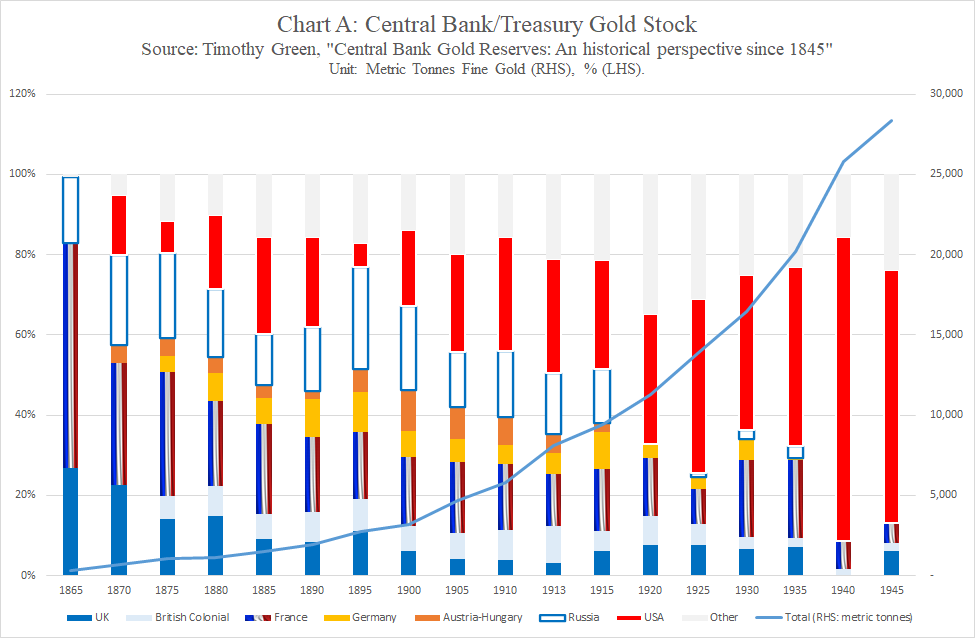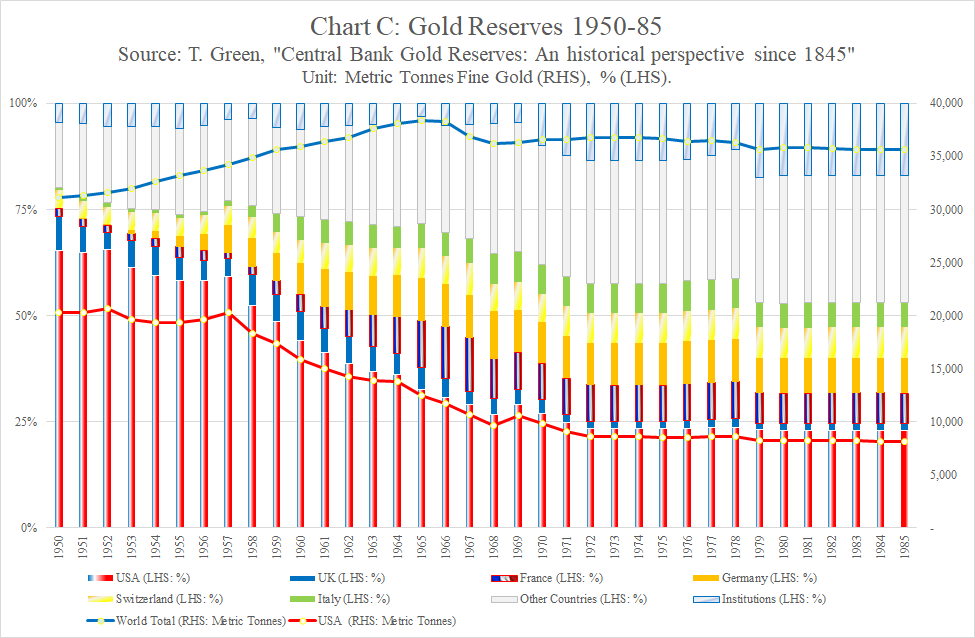In search for Elastic and Scalable Money
Published: 1 December, 2021
Last edited: 13 December, 2021 By Michio Suginoo PDF version for printing
IntroductionAdvocates of the gold standard often regard limited supply of gold as one of the primary merits of the system, an effective check on inflation. In the same analogy, many Bitcoin enthusiasts boast the upper limit of its supply as a merit of the system and often portray Bitcoin as an ideal money of the future [1].
This essay intends to challenge the notion as misapprehension, articulating that limited gold supply was a perennial problem throughout history of the gold standard for a different reason, lack of liquidity/scalability. When the system needed to expand liquidity, it either failed to do so or fundamentally compromised its adjustment mechanism by allowing liquidity substitutes through other means. Two primary takeaways from this essay are:
Apart from three basic functions of money—unit of account, medium of exchange, and store of value—this essay focuses on elastic money and liquidity-scalability and intends to derive historical insights in order to contemplate necessary conditions for the future of money. Limited Gold Supply exacerbated the Great DepressionFirst, in order to illustrate the notion, I would like to start with a symbolic example of the Great Depression.
In response to two systemic crises—the Wall Street Crash of 1929 and the European Central Banking Crisis of 1931—the Hoover administration and the Fed, being in defence of the gold standard, were constrained from undertaking aggressive reflationary initiatives. Instead, contracting liquidity in the system and exacerbating debt-deflation deleveraging spiral [4], the government let the system meltdown. Further deepening of US economic devastation prompted the succeeding Roosevelt administration [5] to suspend gold convertibility, the cornerstone of the gold standard, in 1933 [6] and to devalue USD in 1934 [7].
In brief, a sound monetary system needs to enable central banks to expand and contract the money supply depending on their desirable policy responses to prevailing economic conditions. In sum, elastic currency would be one of necessary conditions, if not the only, for a desirable monetary system. And the narrative of the Great Depression exposed that the gold standard failed to operate elastic currency. What hindered the Hoover administration from expanding liquidity in response to the systemic financial crisis? Why was the gold standard incapable of operating elastic currency? To answer the question, we need to understand how the gold standard operated. The rules of the Game & Mundell-Fleming Trilemma John Maynard Keynes rejected an 18th century myth of the gold standard’s auto-adjustment mechanism of the balance-of-payments imbalances [8], which was popularised by the price-specie flow mechanism [9] formulated by David Hume, a prominent intellect of the Scottish Enlightenment of the 18th century. Keynes articulated that it would require an active involvement of central banks’ monetary policies to devise an adjustment mechanism in the gold standard. He formulated his arguments based on a stylised hypothetical operating framework of the gold standard and coined it as the rules of the Game [10]. The rules of the Game states: for a country with the balance-of-payments deficits, in order to avert gold outflows and to adjust external imbalances, the central bank should raise discount rates. It was thought that a rise in discount rates would induce two desirable adjustments:
Nevertheless, the rules of the Game could cause a critical problem for a country under extraordinary economic dislocations. It would trap a government under recession in a dilemma between two diametrically opposite objectives: to raise discount rates to address external deficits in defence of the gold standard, while allowing domestic economy to further contract; or to reduce discount rates to conduct expansionary monetary policy, while letting gold reserves drained. The gold standard, which was once deemed the cause of prosperity among industrialised countries during 1900-1913, no longer functioned properly after WWI because of the post-war economic dislocations in Europe. And, finally, the Great Depression hit the US and further exacerbated the function of the gold standard. Here echoes a caveat stressed by a former UK prime minister Benjamin Disraeli of the late 19th century: “It is the greatest delusion in the world to attribute the commercial preponderance and prosperity of England to our having a gold standard. Our gold standard is not the cause, but the consequence of our commercial prosperity.” [11] The dilemma described above can be explained by the impossible trinity of Mundell-Fleming Trilemma. It states that it is not possible to achieve simultaneously the following three objectives: a fixed exchange rate, free international capital flow, and monetary policy independence.
Mundell-Fleming Trilemma explains: the rules of the Game, demanding the fixed exchange rate as a prerequisite, gives only one of the remaining two options to governments: domestic policy independence or free international capital flows. This was a critical limitation of the fixed exchange rate system. In other words, Mundell-Fleming Trilemma explains that the gold standard forces a government under economic distress to make one of the following three sub-par options: to defend the gold standard (gold parity: the fixed exchange rate), a government needs either:
In a nutshell, due to the impossible trinity, while the Hoover administration and the Fed, in defence of the gold standard, had been constrained from undertaking an aggressive reflationary initiatives and let the system melt-down, the Roosevelt administration took the third option to suspend the gold standard to address the domestic economic dislocations. Overall, the gold standard hindered a government under economic distress from expanding money supply.
| ||||||||


